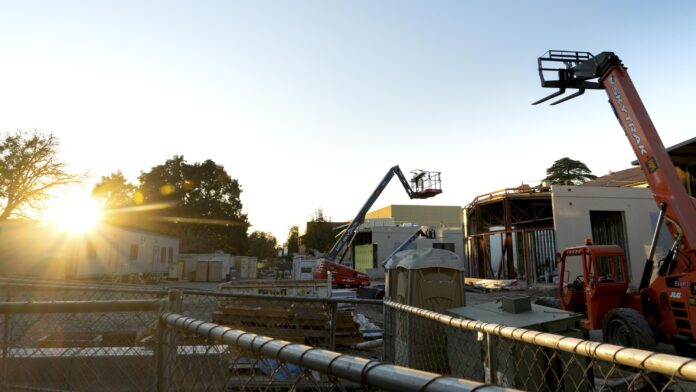Upcoming 2020 GO bond would allow campus, UC system to update, improve facilities
In the year 2018, UC Davis had accumulated over $1 billion in deferred maintenance investments. In other words, there was over $1 billion worth of facility maintenance — buildings and systems upkeep — that the university has been unable to collect due to a lack of funds. UC Davis’ backlog is the highest out of all of the UC campuses, with the average backlog at about half a billion dollars.
The UC Davis campus spans over 5,300 acres of land with over 1,000 buildings that require regular maintenance to meet safety requirements and maintain the infrastructure as well as new security features, as many of them were built over 50 years ago. It is the largest campus within the UC system. Earlier this quarter, The California Aggie’s Editorial Board sat down with Chancellor Gary May — in this interview, he addressed deferred maintenance.
“We have more than a quarter of the system’s whole deferred maintenance here in one campus,” May said during the interview. “We have seismic problems, we have 13 buildings rated at a six or above, and six [is] bad — higher number means worse in seismic. We’ve been spending, of our own resources, about $70 to $80 million a year, but if the number that you’re trying to get to is $1.2 billion, it takes a long time to get to.”
Although there is over $1 billion in backlog on facilities maintenance, this doesn’t necessarily mean that the buildings and systems are unsafe. The Design and Construction Management and Campus Planning teams work to proactively address needs before they become urgent. This way, they can avoid an increased accumulation of deferred maintenance backlog from costly failures and repair needs.
The university developed a three-year deferred maintenance plan in 2018 for how they would address the problem which will be working concurrently with the already-in-place 10-year capital investment plan.
Similarly, AB-48, a California bond measure for a $15 billion bond, will be on the ballot in March 2020, with these funds directly intended to “improve seismic safety of various buildings, address deferred maintenance and expand the physical capacity to serve California students.” This bond, referred to as a general obligation (GO) bond, was signed by Calif. Governor Gavin Newsom and would be the first GO bond in support of the UC since 2006. May explained that roughly $2 billion would be allocated to UC Davis.
“The GO bond that’s going to be on the ballot [is] a $2 billion bond that will allow us to do more construction around campus and modernize some of our deferred maintenance problems,” May said. “Hopefully the GO bond and some other fundraising things will help us.”
Allen Tollefson, associate vice chancellor of facilities management at UC Davis, did not respond to a request for comment.
The aforementioned three-year plan’s guiding principles include capitalizing on opportunities with the highest return, addressing needs before they become urgent, striving for sustainability and improving the campus appearance and work spaces. It also makes clear that no new facilities or major renovations will be approved without a long-term funding plan for maintenance.
In the meantime, while the GO bond is still pending, these projects are funded by state and local funding.
“State funds are those provided from sources outside of the UC Davis campus,” Jim Carroll, the university’s architect and associate vice chancellor in charge of design and construction management, said via email. “These could be from bond sales, budget set-aside from the State, budget set-aside from the University of California (Office of the President), or others. Local funds are those provided from sources within the UC Davis campus – over the past few years, UC Davis has significantly funded deferred maintenance through a few sources, such as the century bond program, annual budget allocation(s), or as part of capital improvement projects, when appropriate.”
Recent drastic cuts in state funds allocated to these maintenance projects worsened the already insufficient funds. UC Davis was given $90 million in 2015 to address the “campus’s most critical deferred maintenance needs over a five-year period,” but this amount is still under 10% of what it really needs. Moreover, this five-year period will be coming to a close, as 2020 is only one month away.
According to the deferred maintenance plan, “the campus believes that based on its status as a public institution, the state should play a role in addressing and supporting campus deferred maintenance reduction efforts.”
The UC system as a whole has received $35 million to address deferred maintenance, but the total required funds for all its campuses adds up to $4 billion, according to the minutes of the meeting of the Financial and Capital Strategies Committee of the Regents of the University of California on Sept. 26, 2018.
As of 2019, the university has not announced any updates to the deferred maintenance plan, nor has the website detailing this issue been updated since 2018.
Written by: LINH NGUYEN — features@theaggie.org



